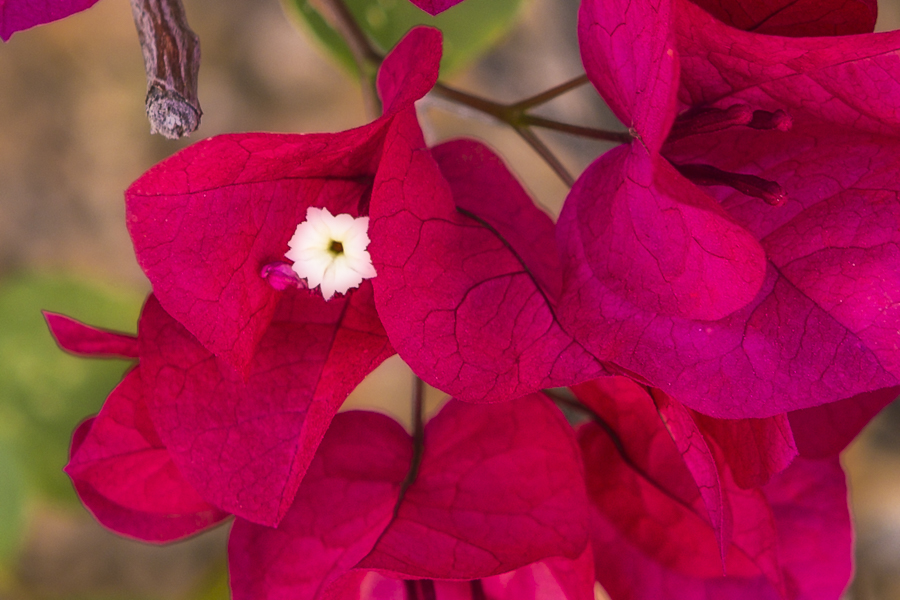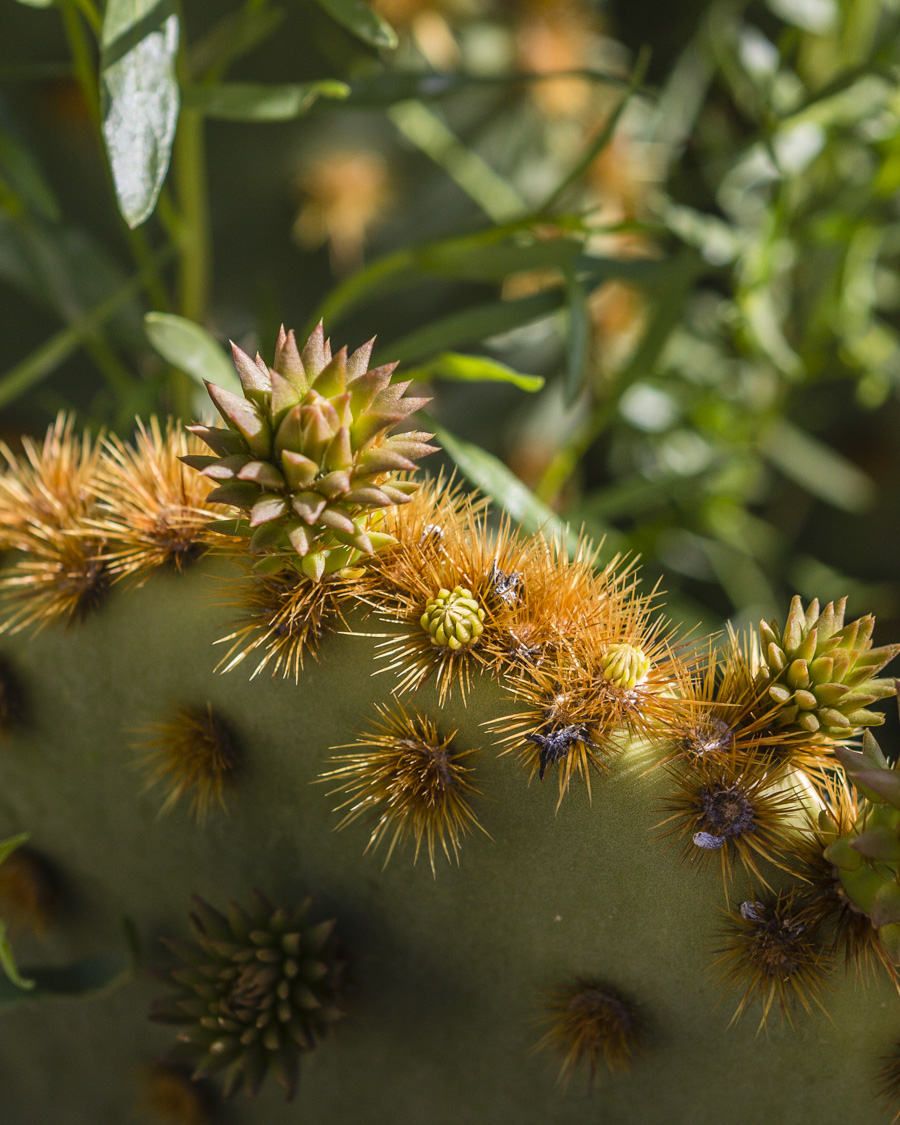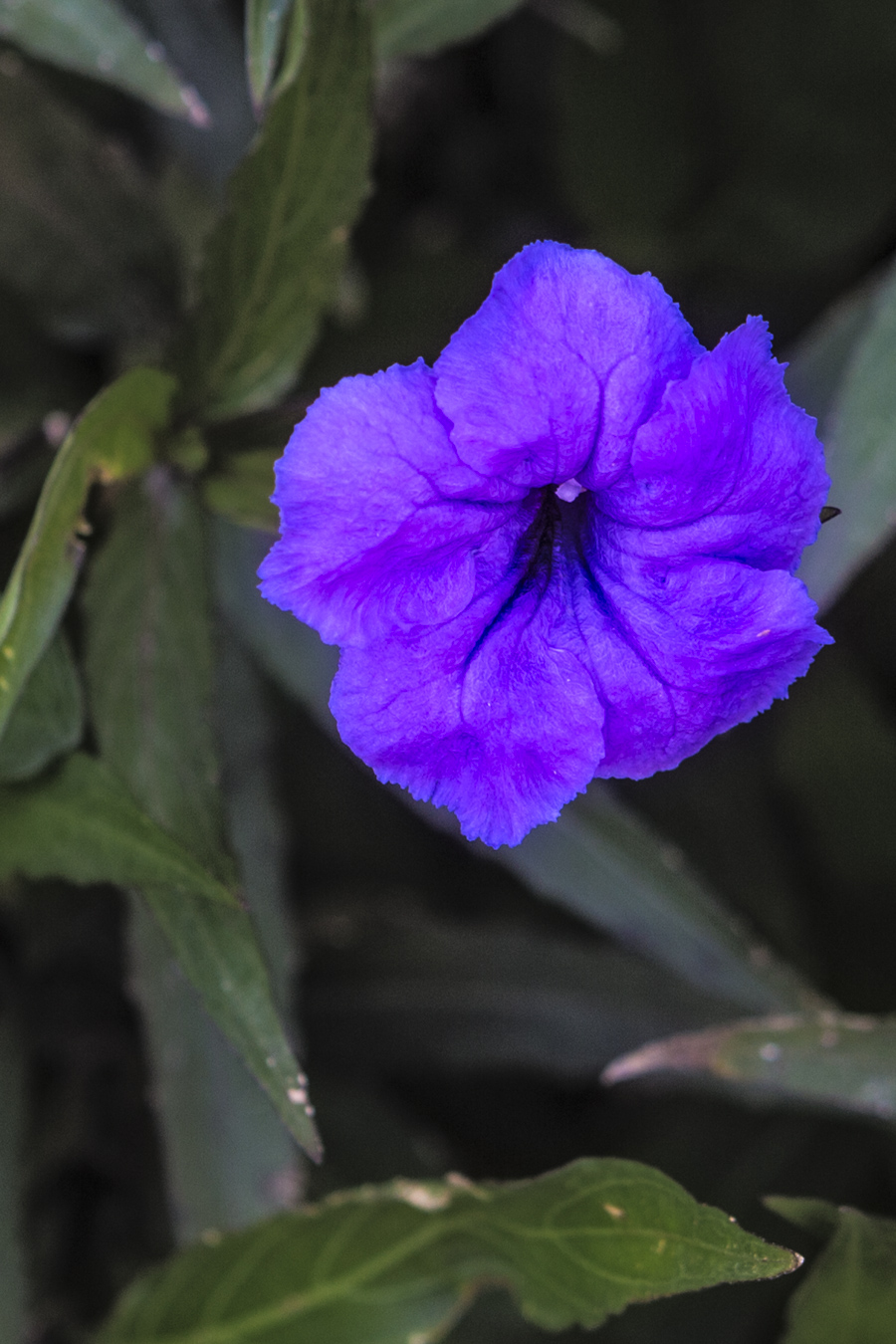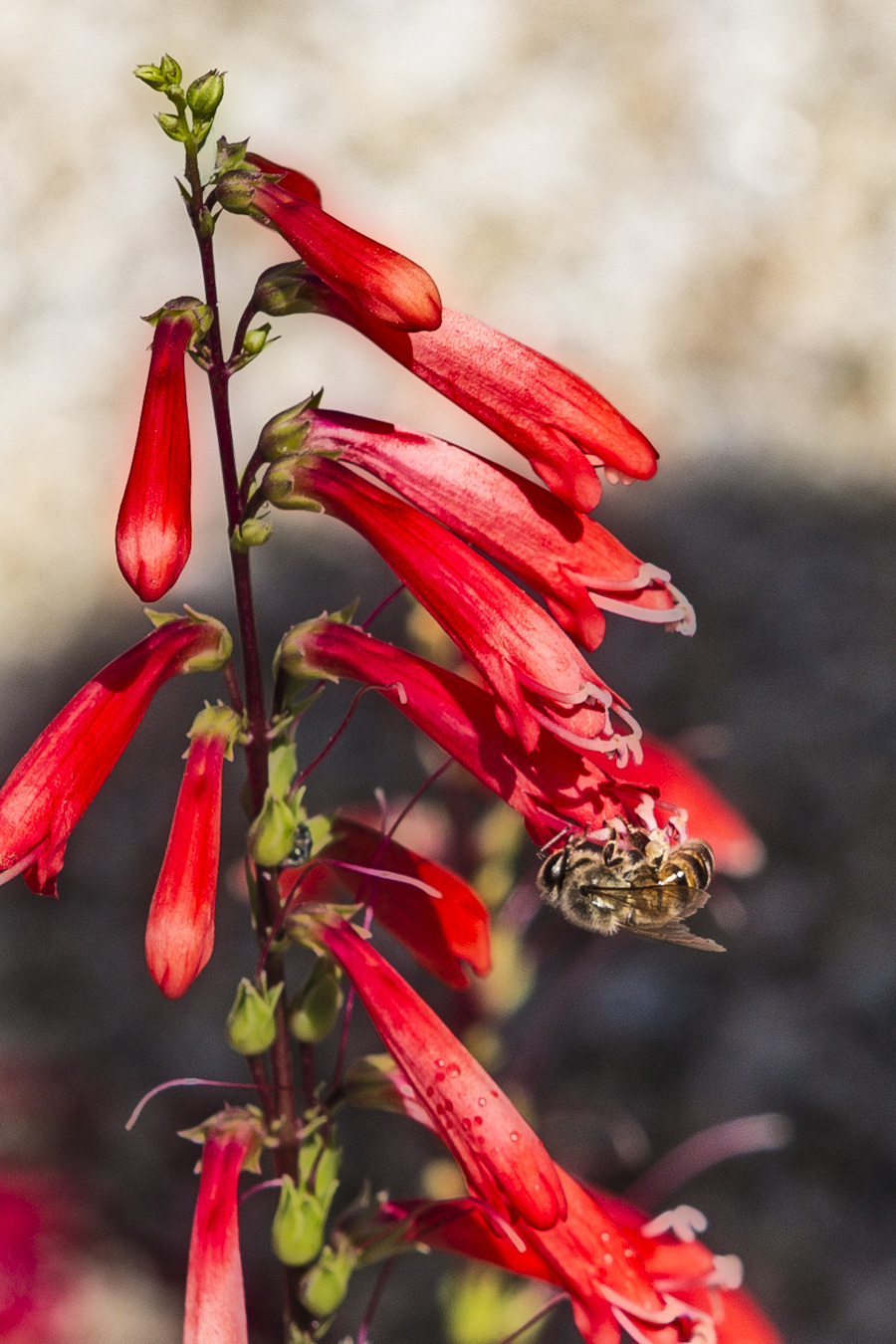Arizona has winter also. Perhaps not as severe as the more northerly winters but the change in the seasons does affect the plant life. The good news is that Arizona also has a spring, which is just beginning. I notice that our garden is beginning to show signs of its springtime finery emerging.
My purpose in taking these following shots was twofold, I wanted to get pictures of newly blooming flora and I wanted to test the focusing capability of a new camera. Here’s what I got:
This first one is a Bougainvillea, a genus of thorny ornamental vines, bushes, and trees with flower-like spring leaves near its flowers. There are many sub-species; including this brilliant red one, very common in the area. I focused on the white flower, which is quite tiny.

Most prickly pear cactus have yellow, red or purple flowers, even among the same species. They vary in height from less than a foot (Plains, Hedgehog, Tuberous) to 6 or 7 feet (Texas, Santa Rita, Pancake). Pads can vary in width, length, shape and color. This one is on the verge of blossoming and although it is not yet sporting a colourful flower, I like the emergent flowers surrounded by sharp spines as a photographic subject. I focused on the small bud just to the right of the larger, more developed one.

Finding a plant that can handle hot, dry conditions without needing a lot of water is a common goal for homeowners who live in the dry Southwest. When you pass by one that is also beautiful, it is time to take a second look and consider adding it to your own garden. Desert ruellia has it all: attractive foliage, lovely purple flowers and a long bloom period, and it can handle the heat and arid conditions of the desert. We have quite a few of these, thanks to the previous owner who understood their merits. For this one, I just focused in the middle of the flower.

Firecracker penstemon is another favourite garden flower in the Southwest. There is so much to like about this beautiful perennial; it is hard to know where to start…. reddish orange flowers, it attracts hummingbirds (and bees), blooms winter through spring, is low-maintenance, drought tolerant and native to the desert. Guess what, I focused on the bee.

My little tour around the backyard produced a few pictures and I learned a little more about the focusing system on the camera. All in all, not a bad shoot with very little travel involved.

Beautiful,refreshing…. It defenitely beats the 4 inches of snow we got yesterday!!
Very attractive macro images, Peter, I suspect taken in early morning or late afternoon. What lens did you use?